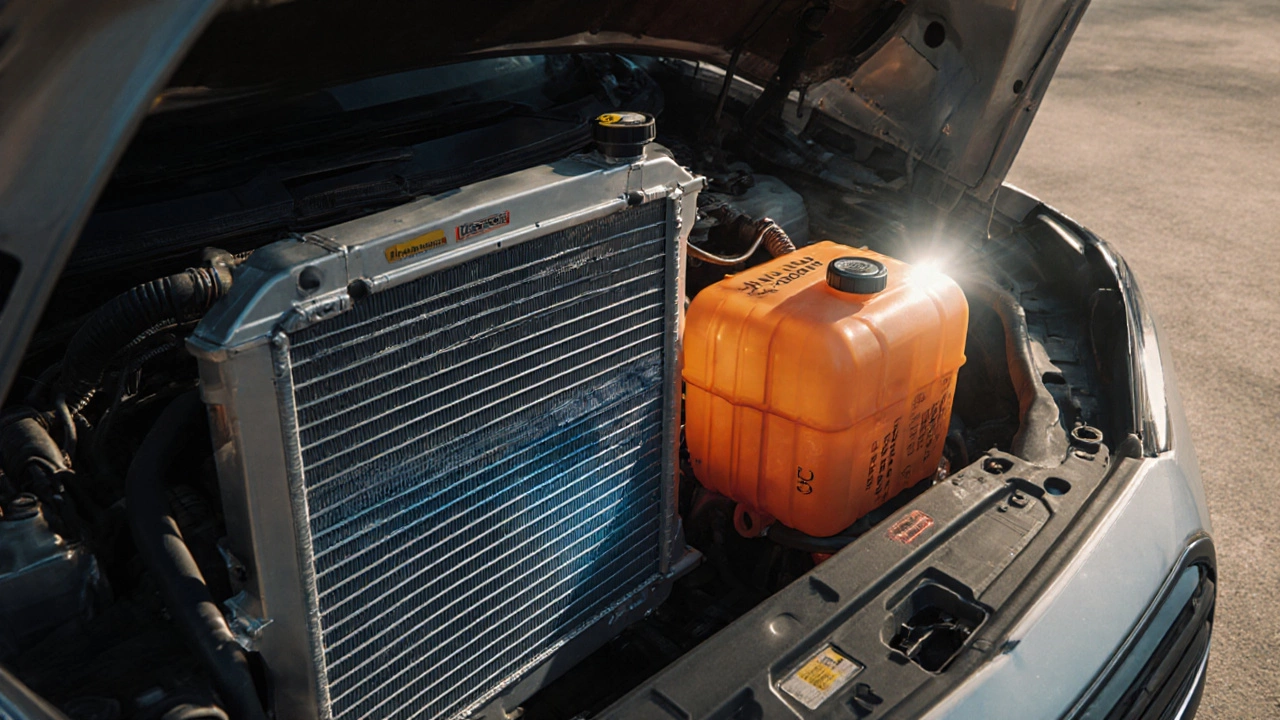Coolant Level: What It Means and Why It Matters for Your Car
When your car’s coolant level, the amount of liquid circulating through your engine to absorb and transfer heat. Also known as engine coolant or radiator fluid, it’s the unsung hero keeping your engine from turning into scrap metal. If it drops too low, your engine overheats—and that’s not a slow, gentle warning. It’s a scream. You might hear it in the hiss of steam, see it in the red warning light, or feel it in the sudden loss of power. Most people check oil. Few check coolant until it’s too late.
A healthy coolant system, the network of hoses, radiator, water pump, and thermostat that circulates coolant to regulate engine temperature doesn’t just need fluid—it needs the right kind, in the right amount, at the right time. A low coolant level isn’t always a leak. It could be a cracked hose, a failing radiator cap, or even air trapped in the system after a recent repair. Cars with older radiators, like those over 8 years old, often lose coolant slowly through tiny cracks or worn seals. And if you’ve ever seen green or orange puddles under your car? That’s not just mess. That’s your engine begging for help.
The radiator, the metal component that cools engine coolant by exposing it to airflow is where the magic happens. But if your radiator’s clogged with rust or debris, or if the coolant’s old and broken down, it can’t do its job. That’s why checking coolant level isn’t just about topping up—it’s about catching problems before they turn into a $3,000 engine rebuild. You don’t need a garage to check it. Just wait for the engine to cool, pop the hood, find the overflow tank (not the radiator cap), and look for the minimum and maximum lines. If it’s below the line, add the right coolant. No guesswork. No mixing random fluids. Stick to what your manual says.
And don’t ignore the signs. If your car overheats on the highway but cools down in traffic, if the heater blows cold air when it should be warm, or if you smell sweet, syrupy steam under the hood—those aren’t coincidences. They’re symptoms. And they’re all tied to coolant level and system health. The posts below show you how to spot failing radiators, why coolant turns rusty, how often to flush the system, and what happens when you skip maintenance. You’ll find real fixes, not myths. No fluff. Just what works on UK roads.

How to Check Your Radiators - Simple Steps for Car Owners
Learn how to inspect your car's radiator with a simple step‑by‑step guide, tools list, common issues, and troubleshooting tips to avoid overheating.
October 9 2025